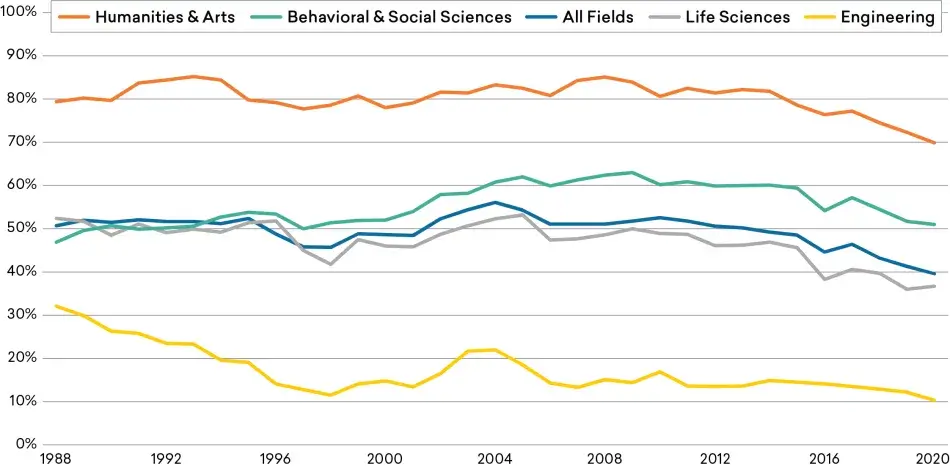Share of New Doctorate Recipients with a Definite U.S. Employment Commitment Entering an Academic Job, by Field of Degree, 1988–2020
Share of New Doctorate Recipients with a Definite U.S. Employment Commitment Entering an Academic19 Job, by Field of Degree, 1988–2020

Within the shrinking share of new humanities and arts PhDs with a definite job commitment, the share who were entering higher education also contracted in recent years. The recent peak occurred in 2008 (with 85% of those with a definite U.S. job commitment entering academia), fell to a slightly lower plateau until 2014, and then declined to the lowest recorded level (just below 70%) in 2020.
Even with the recent declines, new PhDs with a degree in the arts or humanities with a definite U.S. job commitment were much more likely to be entering academic employment at the time they earned the degree than their counterparts in other fields. In 2020, barely half of new PhDs in the behavioral and social sciences with a job commitment at graduation planned to enter academic employment, and the share among all new PhD recipients with a job commitment that year was 40%.20